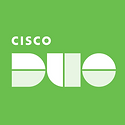Types of integrations
Badge offers a variety of seamless integrations in the form of direct integrations, apps, and connectors. Badge uses standard protocols and formats in its integrations, ensuring that deployments are as easy and plug-and-play as possible. These integrations facilitate:
-
Users logging into apps, devices, and systems using Badge
-
Users logging into an SSO and/or IAM provider using Badge
-
Users logging into apps or services that are already connected to an SSO or IAM provider, through Badge
-
Users logging into legacy and non-federated apps & domains through Badge
-
The syncing of users between an existing directory and Badge
Integrations for Consumers & End Users

Entra External ID (Azure AD B2C)
The Azure B2C integration allows organizations to deploy Badge to their end users and customers, so that end users may log into the org’s services using Badge.

Passkeys
The Badge MacOS, iOS, Android, and Windows Passkey provider allows users to log into websites using passkeys generated and synced by Badge

Epic (Patient)
Badge integrates with Epic Health systems, including MyChart. This allows patients to securely and privately log into MyChart to access their medical information from any device.

Auth0
The Badge app in Auth0 allows organizations to deploy Badge to their end users and customers, so that end users may log into the org’s services using Badge.

Thales OneWelcome
The Badge integration with OneWelcome allows organizations to deploy Badge into their end users' and customers' authentication flows, so that end users may log into the org’s services using Badge.
Integrations for Enterprises & Organizations

Windows logon
The Badge Windows Credential provider allows users to log directly into a Windows workstation using Badge.
Traditionally, logging into Microsoft services on the web or a virtual desktop all involved separate, often password-based logins. Now with Badge, users experience a simple and consistent passwordless login, no matter the situation. In addition to the user experience benefits, Badge offers the highest level of security available by storing no secrets while enforcing MFA.

Azure Virtual Desktops (AVD)
The Badge integration with Azure virtual desktops (AVD) allows users of AVD to log into these workstations using Badge.
One of the benefits of deploying VDI such as Citrix virtual desktop & Azure virtual desktop is its cross-platform support across MacOS and Windows. Deploying Badge with AVD, Citrix DaaS and virtual desktops allows further unification of the end user login experience, and does so in the most secure, passwordless manner possible.

Google Workspace
The Badge integration with Google Workspace allows users to log into their Google Workspace account, and thereby all Google Workspace connected apps, using Badge
Organizations choose Google workspace to deliver email and productivity tool solutions to their workforce because of Google Workspace’s ease of use and cross platform compatibility. Using Badge with Google Workspace allows employees to have a truly cross platform and roaming compatible authentication experience, all while preserving their privacy.

Passkeys
The Badge MacOS, iOS, Android, and Windows Passkey provider allows users to log into websites using passkeys generated and synced by Badge
The Badge MacOS, iOS, Android, and Windows Passkey provider allows users to log into websites using passkeys generated and synced by Badge. Badge seamlessly re-derives and logs users in using any synced passkeys the users create with Badge. This delivers a seamless login experience, without ever actually storing the private passkey portion anywhere. For example, the Badge Passkey provider currently allows users to login to Amazon.com, GitHub, Gmail, etc.

Epic
The Badge integration to Epic Hyperspace allows healthcare professionals to log into their medical records systems using Badge.
Clinicians and healthcare professionals work in an environment that requires multiple points of login, often with different usernames and passwords along with dozens of types of MFA’s and tokens. Badge allows healthcare professionals to focus on what matters the most – patients, by delivering the easiest and fastest passwordless login experience. Healthcare IT professionals love that Badge delivers the highest level of security for them and their organization, while for once removing friction from the end user experience.

Ping Identity
The Badge connector and integration with Ping Identity’s solutions allows users to log into any Ping connected app or service using Badge
Ping Identity’s multiple solutions deliver well on the difficult problem of unifying multiple different directories and IAM layers. Badge’s multiple integrations to Ping ensures that end users get the same easy, intuitive, and secure passwordless login experience no matter what system or device Badge needs to be deployed into.

Apple Kerberos SSO
The Badge integration with Apple Kerberos Single Sign On Extension allows users to use Badge for SSO to enterprise applications on MacOS.

Cisco DUO
The Badge integration with Cisco Duo allows Badge to be the primary authentication factor and Duo to be the secondary/MFA/step up factor for any apps and services connected to Duo.
Many organizations utilize Cisco Duo to enforce specific and customizable MFA challenges based on different policies and contexts. The Badge and Cisco Duo integration delivers organizations the best of both worlds – the ability to enforce multiple MFA options along with offering Badge’s true roaming and privacy-preserving MFA experience. This allows enterprises to eliminate passwords and other low security, single factor authenticators by combining Badge and Cisco Duo.

Okta
The Badge app and integration with Okta allows users to log into their Okta account, and thereby all Okta connected apps, using Badge
Traditional approaches to reducing phishing and account takeover risk involved adding complexity to the MFA process, such as number challenge mode in Okta Verify. The Badge and Okta integration gives the flexibility of deploying as either a second or primary factor, all while delivering better user experience and MFA security than other options.

Certificates (X.509)
The Badge certificate based authentication integration allows organizations to inject the Badge authentication experience into nearly any system that uses public and private key based authentication such as PKI, X.509, TLS, SSH, and more.
Behind the scenes of most enterprise grade authentication is the usage of PKI certification based authentication. These systems used to rely on difficult user authentication experiences involving command line usage, hardware tokens, and more. Thanks to Badge’s ability to appear as any standard certificate based authenticator, end users get the ease and ideal user experience of logging in with Badge, while legacy systems get to preserve their PKI infrastructure. This is all achieved with near zero integration effort. The end result is that Badge’s secure and simple authentication experience can be used for logging into VPN’s, Windows environments, and much more.

Radiant Logic
The Badge integration with RadiantOne allows administrators and IT personnel to log into RadiantOne using Badge.
Phishing and account takeovers of critical admin or super user accounts are on the rise, and are a high severity attack vector that organizations need to protect. The Badge and RadiantOne integration ensures that RadiantOne administrators and users are protected by the most secure, passwordless and secret-less authenticator on the market today, reducing the risk of account take overs.

Secure Shell (SSH)
The Badge command line agent allows users to use Badge to sign onto SSH session and other command line based systems using Badge
Some of the most critical systems require command line usage, and the power users that manage these systems are often stuck using antiquated password-based logins, or complex certificate based logins that are at risk of credential theft. The Badge command line agent allows the continued benefits of certificate based authentication under the hood, while eliminating the storage of secret keys anywhere.

Microsoft Entra ID
The Badge and Microsoft Entra integration allows users to log into their Microsoft Entra account and services using Badge, automatically sync user accounts between Badge and Microsoft, and log directly into Azure Virtual Desktop workstations using Badge
Traditionally, logging into Microsoft services on the web or a virtual desktop all involved separate, often password-based logins. Now with Badge, users experience a simple and consistent passwordless login, no matter the situation. In addition to the user experience benefits, Badge offers the highest level of security available by storing no secrets while enforcing MFA.

Citrix DaaS
The Badge integration with Citrix allows users of Citrix Remote Desktops to log into those workstations using Badge
One of the benefits of deploying VDI such as Citrix virtual desktop & Azure virtual desktop is its cross-platform support across MacOS and Windows. Deploying Badge with AVD, Citrix DaaS and virtual desktops allows further unification of the end user login experience, and does so in the most secure, passwordless manner possible.
Frequently Asked Questions
What is SAML and what is the benefit?
SAML is a standard and widely accepted protocol and method that allows an authenticator system like Badge to sign users into another system or service. Badge has implemented SAML support to allow user to log into any other software or system that also supports SAML.
Badge’s SAML support ensures that future integrations and partnerships can take place quickly and with little to no development effort.
What is OIDC and what is the benefit?
OIDC, a part of OAuth 2.0, is a standard and widely accepted protocol and method that allows an authenticator system like Badge to sign users into another system or service. Badge has implemented OIDC and OAuth 2.0 support to allow user to log into any other software or system that also supports OIDC and OAuth 2.0.
Badge’s OIDC and OAuth 2.0 support ensures that future integrations and partnerships can take place quickly and with little to no development effort.
What is SCIM and what is the benefit?
SCIM is a standard and widely accepted protocol and method for different software systems to exchange information about their users and groups. Badge has implemented SCIM support to allow for quick syncing of users from an org’s primary directory into Badge, eliminating the need for IT administrators to manually create users, and automatically ensuring that the right users always have access to Badge.
Badge’s SCIM support ensures that future integrations and partnerships can take place quickly and with little to no development effort.
What types of documentation is available?
Badge has setup guides and documentation on all the Badge integrations. The Badge Solutions team works directly with customers to deploy these integrations to ensure a successful and expeditious rollout.
What type of Badge customers use these integrations?
Badge customers include companies across healthcare, banking, retail, and services. Any organization that benefits from simplifying complex directory and identity ecosystems, requires that their authentication system supports true roaming across new and unknown devices, cannot afford downtime or risk from account recovery or resets, or just wants to offer a true passwordless sign on system that is more secure than any other authenticator on the market today.
Badge is also critical for organizations looking to deploy and support passkeys.
Which integrations have been tested?
All our Badge integrations, apps, and connectors have been thoroughly tested and are fully functional.

Zero-code integration using standard protocols:




Badge integrates with leading identity providers and directory services in minutes




Identity without Secrets™
© 2025 Badge Inc. | All Rights Reserved
All trademarks are the property of their respective owners. Terms of Use



